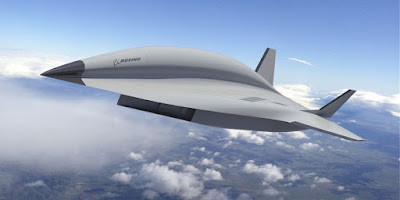Commercial airliners haven’t broken the sound barrier since the Concorde was retired in 2003. But now some aerospace firms hope to usher in a new era of supersonic air travel. Boom Supersonic, for one, plans to build 1,451-mile-per-hour planes that would be able to make the trip from
Other firms aren’t content with
supersonic flight. They’re designing so-called hypersonic
aircraft capable
of flying five times the speed of sound, or around 3,800 miles per hour. These
ultra-fast planes would likely first be used by the military for strike and
reconnaissance missions. But experts say hypersonic technology could make its
way into commercial jets. It would then be possible to fly anywhere on Earth in
under three hours.
Boeing has finally unveiled a successor to the legendary
Blackbird SR-71 spy plane, capable of traveling at five times the speed of
sound. The new 'Son of Blackbird' was revealed at an event in Orlando , Florida




No comments:
Post a Comment